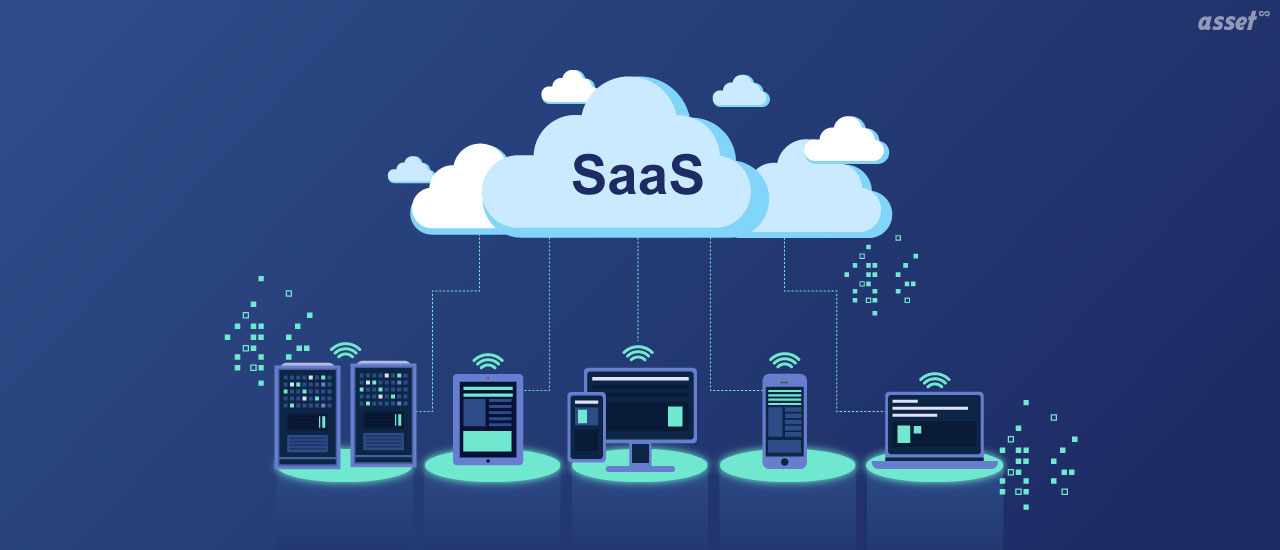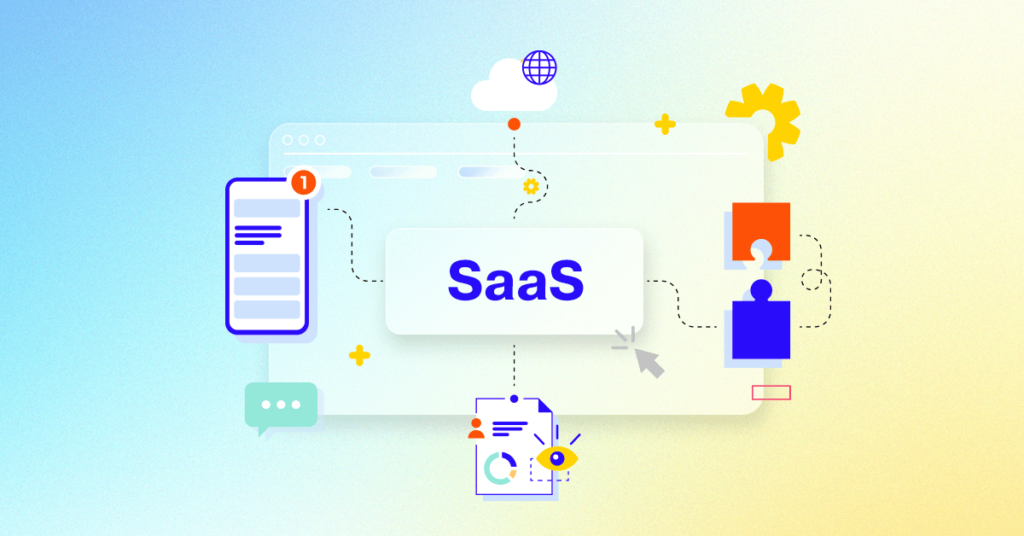If you’re a business leader seeking to enhance operational efficiency or a tech enthusiast wanting to understand the latest in cloud technology, this guide on « types of SaaS » is tailored to offer you valuable insights. Software as a Service (SaaS) has revolutionized how businesses operate, providing scalable solutions with reduced overhead. In this comprehensive guide, we’ll delve into different categories of SaaS applications, offering information that surpasses standard Google search results. Let’s explore the diverse world of SaaS as it stands in 2025.
What is SaaS?
Before dissecting the types of SaaS, it’s crucial to understand what SaaS entails. SaaS is a software distribution model where applications are hosted by a service provider and made available to customers over the internet. It eliminates the need for organizations to install and run applications on their computers or data centers.
In 2025, SaaS has become even more integral to business operations, with advancements in cloud technology making these services more robust, secure, and customizable than ever before. The global SaaS market has experienced exponential growth, with Statista projecting the market to reach $225 billion by 2025.
Main Categories of SaaS
Customer Relationship Management (CRM)
One of the most popular types of SaaS is CRM. These systems manage a company’s interactions with current and potential customers, using data analysis to study large amounts of information. Popular SaaS CRMs like Salesforce and HubSpot have become integral in automating tasks, managing contacts, and increasing sales productivity.
In 2025, CRM systems have evolved to incorporate advanced AI capabilities, offering predictive analytics and personalized customer journeys. For instance, Salesforce’s Einstein AI now provides real-time insights and automation across the entire customer lifecycle, significantly enhancing the user experience and driving sales performance.
Enterprise Resource Planning (ERP)
ERP software integrates all facets of an operation, including product planning, development, manufacturing processes, and sales and marketing—in a single database, application, and user interface. SaaS-based ERPs like Oracle ERP Cloud and SAP S/4HANA deliver these capabilities with the cloud’s flexibility and cost benefits.
The latest ERP systems in 2025 have embraced the concept of « intelligent ERP, » incorporating machine learning and IoT integration to provide real-time insights and automate complex processes. This evolution has made ERPs more accessible to small and medium-sized businesses, driving adoption across various industries.
Human Resource Management Systems (HRMS)
HRMS helps manage various HR functions such as payroll, benefits administration, performance management, and more. Solutions like Workday and BambooHR streamline HR tasks, allowing for effortless management of employee data and processes.
In 2025, HRMS have become more employee-centric, focusing on employee experience and engagement. Features like AI-driven career pathing, personalized learning recommendations, and predictive analytics for workforce planning have become standard. These advancements help organizations retain talent and build more resilient workforces.
Accounting and Invoicing SaaS
These applications simplify financial operations, offering services from payroll to billing and beyond. Popular platforms include Intuit QuickBooks Online and FreshBooks, which provide small to medium-sized businesses with accounting simplicity via the cloud.
The latest accounting SaaS solutions in 2025 have integrated blockchain technology for enhanced security and transparency in financial transactions. They also offer advanced forecasting capabilities, helping businesses make data-driven financial decisions with greater accuracy.

Specialized SaaS Applications
Marketing Automation
Marketing automation SaaS platforms like Mailchimp and Marketo enable businesses to automate repetitive marketing tasks like emails, social media, and other website actions to increase efficiency and deliver personalized customer experiences.
In 2025, these platforms have evolved to offer omnichannel marketing capabilities, leveraging AI to create hyper-personalized customer experiences across various touchpoints. They now integrate seamlessly with e-commerce platforms, social media, and even virtual reality environments, providing a holistic approach to digital marketing.
Project Management
Tools like Asana and Trello provide comprehensive solutions for managing projects, enabling seamless collaboration through task assignments, progress tracking, and deadline management, all accessible from anywhere in the world.
The latest project management SaaS in 2025 incorporates AI-driven resource allocation, predictive analytics for project outcomes, and augmented reality features for virtual team collaboration. These advancements have significantly improved project success rates and team productivity.
Collaboration and Communication
SaaS solutions such as Slack and Microsoft Teams offer platforms for teams to collaborate and communicate in real-time, regardless of geographical boundaries, facilitating remote and in-office work environments.
In 2025, these platforms have become central hubs for work, integrating advanced language translation for global teams, AI-powered meeting assistants, and virtual reality spaces for immersive collaboration experiences. The line between physical and digital workspaces has blurred, making distributed work more effective than ever.
Emerging Trends in SaaS
Artificial Intelligence and Machine Learning Integration
AI and machine learning are no longer just emerging trends but have become integral elements of SaaS applications, enhancing functionalities like data analysis, customer service automation, and more. This integration promises more intelligent, predictive SaaS solutions that can significantly boost productivity.
In 2025, we’re seeing AI-driven SaaS that can autonomously perform complex tasks, from content creation to advanced data analysis, reducing the need for human intervention in routine processes. This shift has allowed businesses to focus more on strategic initiatives and innovation.
Vertical SaaS
Vertical SaaS targets specific industries, such as healthcare, financial services, or retail, providing tailored solutions that address industry-specific needs. As businesses look for more personalized software solutions, vertical SaaS has become increasingly prevalent.
The trend has accelerated in 2025, with highly specialized SaaS solutions emerging for niche markets. For example, there are now SaaS platforms dedicated to sustainable fashion supply chains, telemedicine for veterinary practices, and AI-driven legal document analysis for small law firms.
Mobile-First SaaS
With the rise in mobile device usage, SaaS providers are designing applications with a mobile-first approach, ensuring that businesses can operate efficiently irrespective of devices. It’s a trend that’s impossible to ignore in today’s smartphone-driven world.
In 2025, mobile-first has evolved into « mobile-only » for many SaaS applications, with some businesses running entirely on mobile devices. This shift has been facilitated by advancements in mobile hardware and the widespread adoption of 5G and emerging 6G technologies.
Choosing the Right SaaS for Your Business
Assessing Your Business Needs
Before diving into the world of SaaS, it’s crucial to assess your business needs carefully. Consider the following questions:
- What are your current pain points?
- Which processes could benefit from automation?
- What are your growth projections, and how scalable does your solution need to be?
- What’s your budget for SaaS solutions?
By answering these questions, you’ll be better equipped to choose SaaS solutions that align with your business objectives.
Evaluating SaaS Providers
When evaluating SaaS providers, consider factors such as:
- Reliability and uptime guarantees
- Security measures and compliance certifications
- Scalability options
- Integration capabilities with your existing systems
- Customer support and training resources
- Pricing models and total cost of ownership
Don’t hesitate to request demos or free trials to get a hands-on feel for the software before making a commitment.
Implementation and Adoption Strategies
Successful SaaS implementation goes beyond selecting the right software. Consider these strategies for smooth adoption:
- Develop a clear implementation timeline and plan
- Provide comprehensive training for all users
- Start with a pilot program before full-scale rollout
- Assign champions within your organization to drive adoption
- Regularly collect feedback and iterate on your implementation strategy
Remember, the success of your SaaS adoption largely depends on how well your team embraces and utilizes the new tools.
The Future of SaaS: What to Expect in 2025 and Beyond
Hyper-Personalization and AI-Driven Experiences
As we move further into 2025 and beyond, SaaS solutions are becoming increasingly personalized, leveraging AI to tailor the user experience to individual preferences and behaviors. This hyper-personalization extends beyond just interface customization to predictive features that anticipate user needs and automate complex workflows.
Integration of Emerging Technologies
The future of SaaS is closely tied to emerging technologies. We’re seeing increased integration of:
- Blockchain for enhanced security and transparency
- Internet of Things (IoT) for real-time data collection and analysis
- Edge computing for faster processing and reduced latency
- Quantum computing for solving complex problems at unprecedented speeds
These integrations are opening up new possibilities for SaaS applications across various industries.
Sustainability and Green SaaS
With growing concerns about climate change, there’s an increasing focus on sustainable and eco-friendly SaaS solutions. This includes:
- Energy-efficient cloud infrastructure
- Carbon footprint tracking and reduction features
- SaaS solutions specifically designed to support sustainability initiatives
Businesses are now considering the environmental impact of their SaaS choices alongside traditional factors like cost and functionality.
Conclusion
As we’ve explored in this comprehensive guide, the world of SaaS is vast and continually evolving. From traditional applications like CRM and ERP to emerging trends in AI-driven, mobile-first, and vertical SaaS solutions, there’s a wealth of options available to businesses in 2025.
The key to success lies in understanding your business needs, carefully evaluating your options, and implementing solutions that align with your long-term goals. As technology continues to advance, SaaS will undoubtedly play an even more crucial role in shaping the future of business operations.
Whether you’re looking to enhance customer relationships, streamline your operations, or drive innovation in your industry, there’s likely a SaaS solution that can help you achieve your objectives. By staying informed about the latest developments in SaaS and adopting a strategic approach to implementation, you can position your business for success in the digital age.
Remember, the journey to finding the right SaaS solutions for your business is ongoing. As your business grows and evolves, so too should your SaaS strategy. Stay curious, keep exploring, and don’t be afraid to embrace new technologies that can give your business a competitive edge.
We hope this guide has provided you with valuable insights and a deeper understanding of the various types of SaaS available in 2025. As you consider the best SaaS options for your organization, remember to align them with your long-term business goals. Whether it’s enhancing customer relationships, managing your resources, or facilitating team collaboration, SaaS holds the potential to redefine how your organization functions in this digital era.
